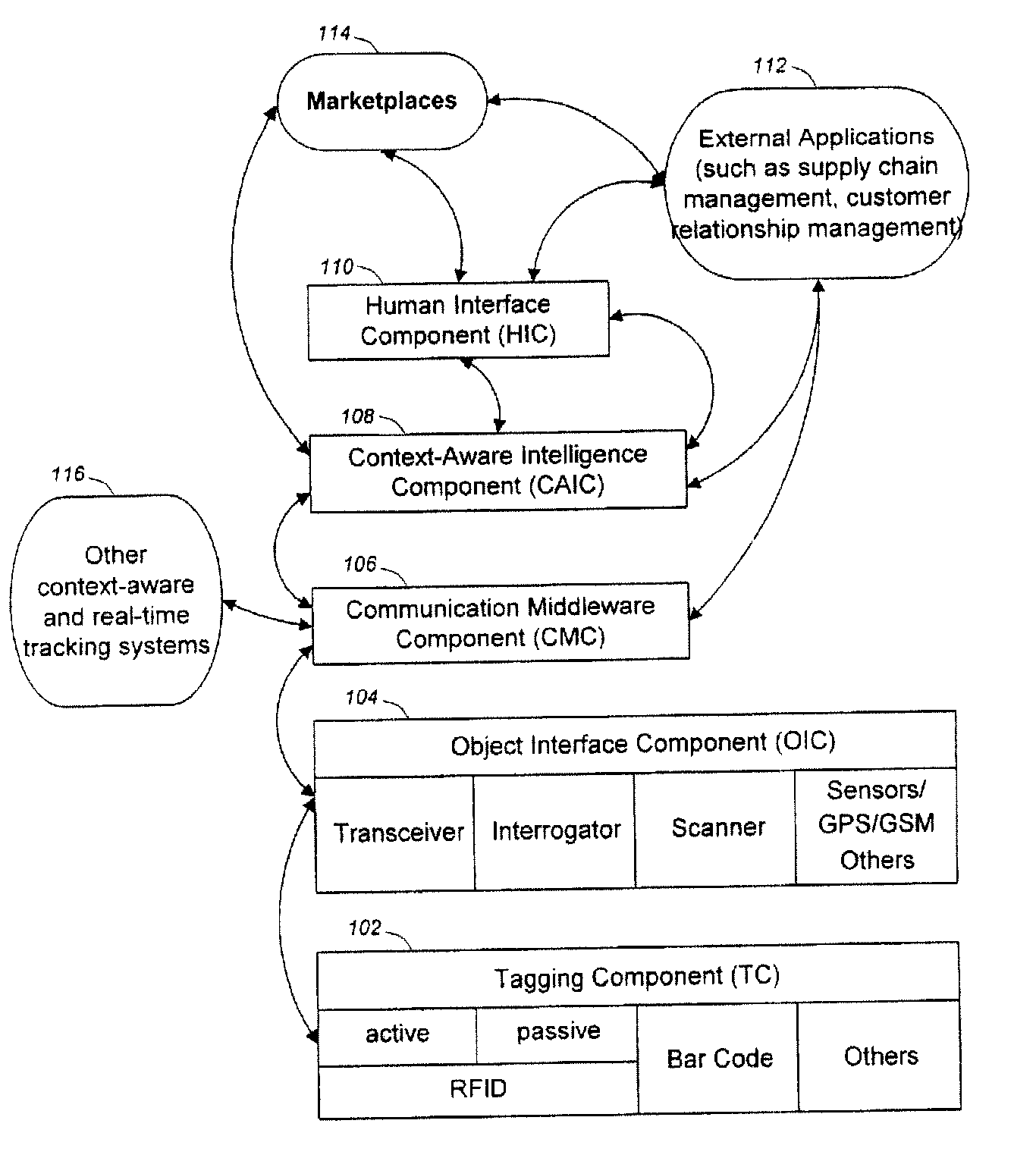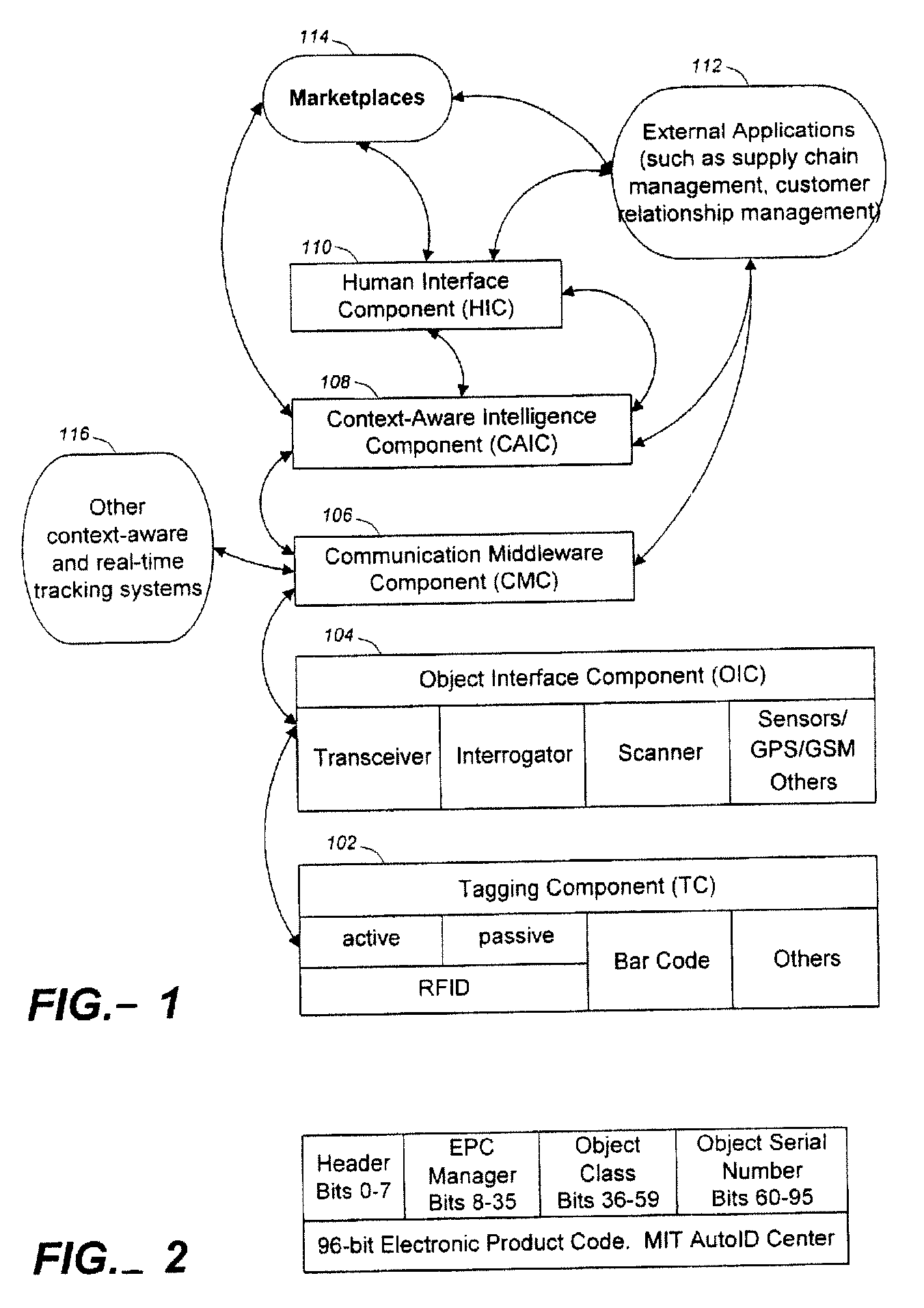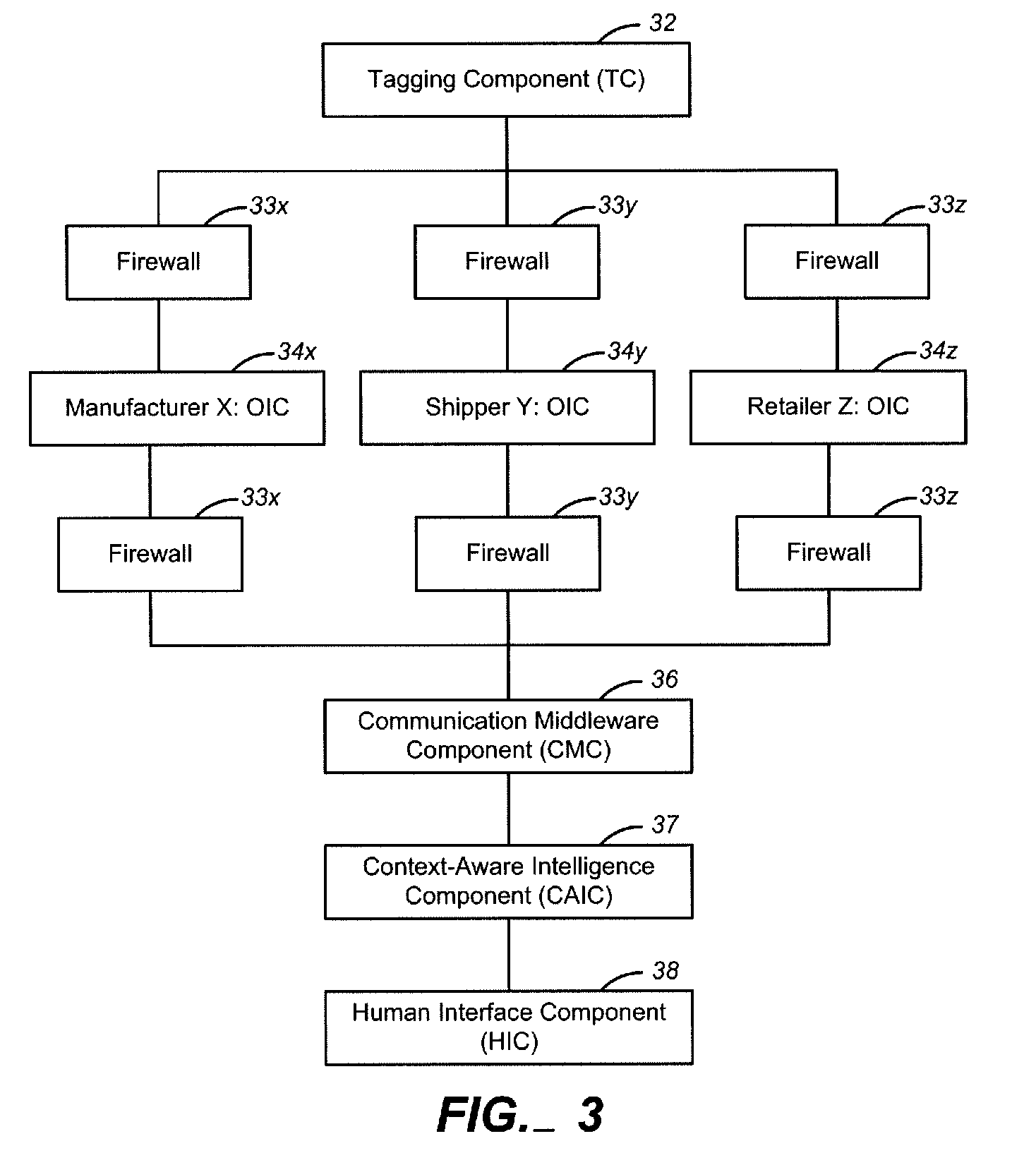Context-aware and real-time item tracking system architecture and scenarios
a technology of contextual awareness and item tracking, applied in the field of tracking tangible items, can solve the problems of distorted and fragmented picture of reality of conventional systems, and most conventional systems see with a very limited scope and resolution, so as to save memory or bandwidth, reduce the amount of bandwidth consumed by information, and efficient communication of information.
- Summary
- Abstract
- Description
- Claims
- Application Information
AI Technical Summary
Benefits of technology
Problems solved by technology
Method used
Image
Examples
Embodiment Construction
Table of Contents
[0094]1. System Overview
[0095]2. One implementation of the System[0096]2.1. Cross-Enterprise Shipment Scenarios[0097]2.2. Bi-Directional Data Flow
[0098]3. Another Implementation of the System[0099]3.1. Software Upgrades[0100]3.2. Cross-Enterprise Visibility[0101]3.3. Data Communication and Coherence Between World Models[0102]3.4. Per-item Identification Scenario in International Trade[0103]3.5. Item Scenarios[0104]3.6. Information Retrieval Scenarios
[0105]4. Data Transfer between the Item Tracking Systems and the Tag Readers[0106]4.1. Event Routers[0107]4.2. Integration Engines
[0108]5. Compression, Filtering, and Encoding of Tracking Information
1. System Overview
[0109]A system in accordance with the invention receives information in an open, non-proprietary form, concerning items and circumstances affecting items. In this specification, the term ‘item’ has a very broad meaning. It encompasses the meaning of the term ‘item’ as used in the above referenced patent appl...
PUM
 Login to View More
Login to View More Abstract
Description
Claims
Application Information
 Login to View More
Login to View More - R&D
- Intellectual Property
- Life Sciences
- Materials
- Tech Scout
- Unparalleled Data Quality
- Higher Quality Content
- 60% Fewer Hallucinations
Browse by: Latest US Patents, China's latest patents, Technical Efficacy Thesaurus, Application Domain, Technology Topic, Popular Technical Reports.
© 2025 PatSnap. All rights reserved.Legal|Privacy policy|Modern Slavery Act Transparency Statement|Sitemap|About US| Contact US: help@patsnap.com



